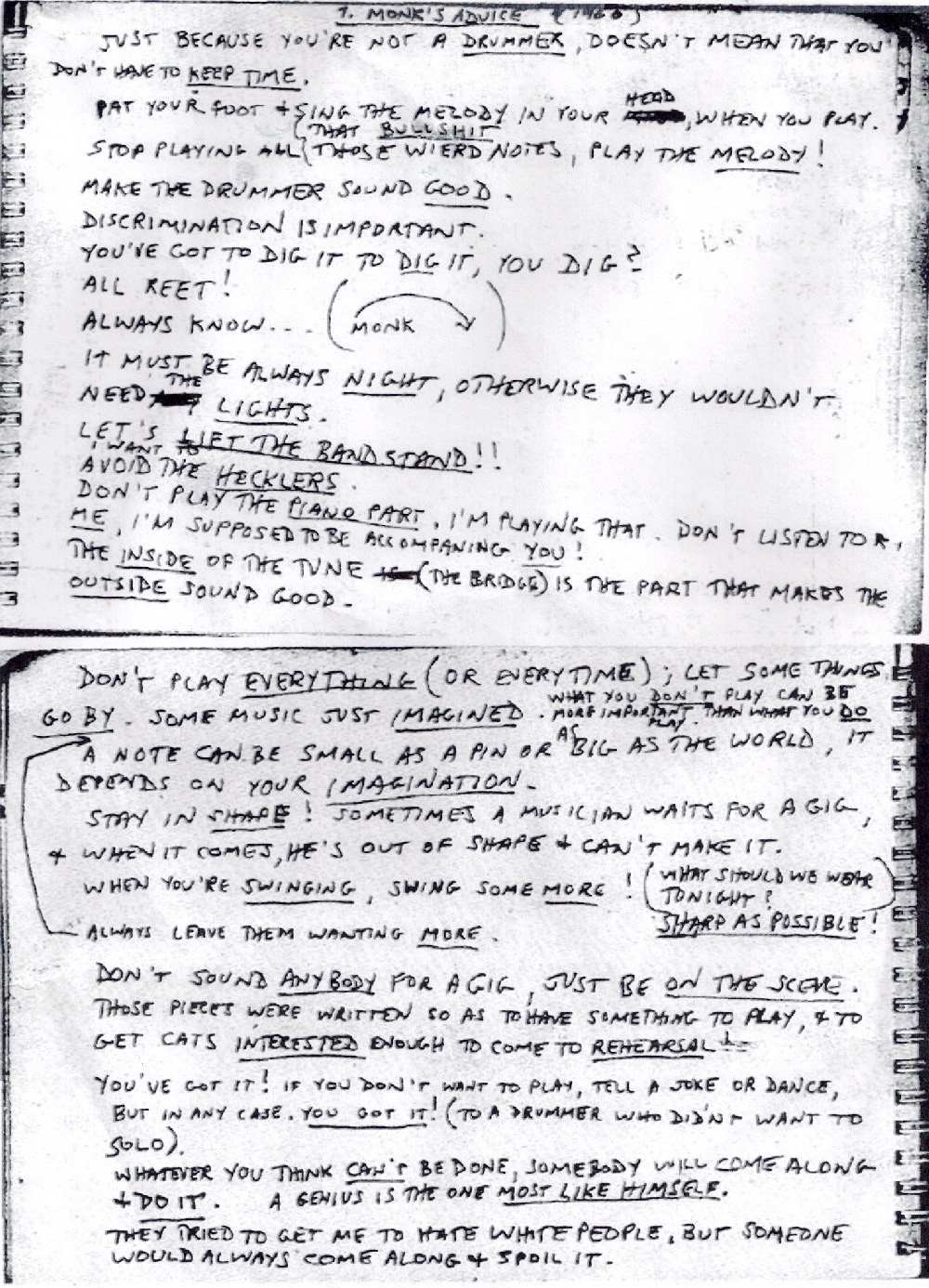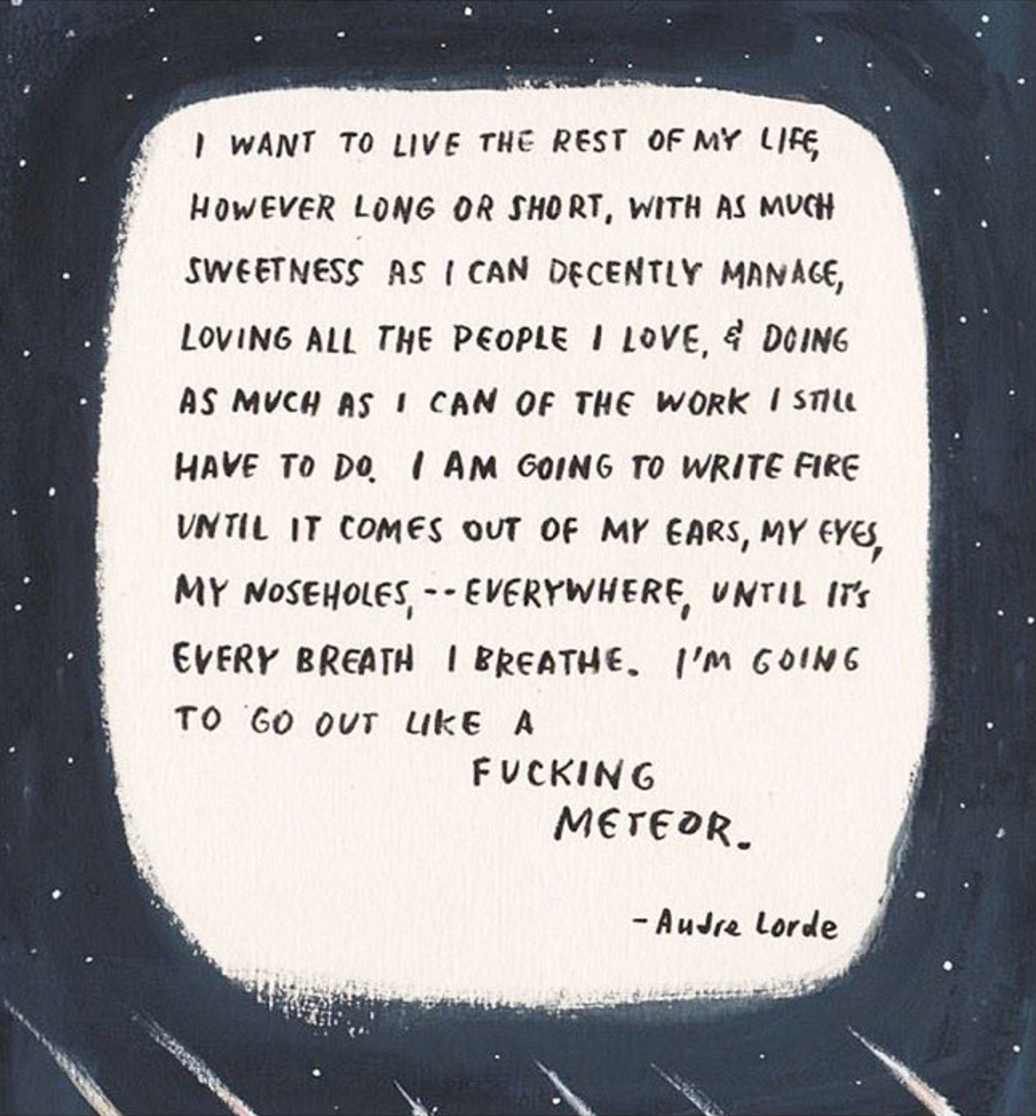
Last month, I came across this post by Jason Kottke on a list of advice that jazz pianist Thelonious Monk gave to a fellow musician. The post is playful and the advice is both practical and humorous, but after reading it a few times, my mind started making educational connections.
As educators (whether we teach kids, adults or both), we play a similar role as musicians. Each day we enter our classrooms, schools, or work spaces and play a “gig.” Sometimes that gig is successful – we hit each note just right, we engage our audience, and leave them wanting more. Other times, we fall flat – our audience just doesn’t connect with what we’re playing and we are unable to evoke any emotional response. I don’t know any educator who has a perfect day, everyday, but I know hundreds who reflect on both the perfect and imperfect days and use this to grow.
Here’s some of my favorite advice from the list:

“Just because you’re not a drummer, doesn’t mean you don’t have to keep time.”
How often have you heard a colleague say, “Well, that’s not my job” or “I teach ______, not _______”. Unfortunately, these conversations happen every single day. As educators, our job is to make sure kids are receiving the most amazing learning experiences possible. We don’t teach English or Science or History or Math – we teach kids. Nurturing them, their dreams, their imaginations, their wants and needs comes first. This is all of our jobs. We aren’t hired to simply disseminate information to students, we are hired to inspire them in their own pursuits and help to prepare them for whatever is happening now and whatever comes next. So, even if you don’t identify as a drummer, you are still a part of the band and we all have to be in sync to make the magic happen.

“You’ve got to dig it to dig it, you dig?”
Do you love what you do everyday? I don’t mean do you have an awesome day everyday – I mean do you enter your classroom, school or work space knowing that what you do matters? That what you do is impactful? That what you do is making a difference and changing the world? If you don’t dig what you do, or believe these things, then why are you doing it in the first place? Because, your kids and colleagues will know.

“Avoid the hecklers.”
Once negativity set in, it can run rampant, infiltrating an organization quickly, destroying its culture. Most of us have probably experienced hecklers at some point. Unfortunately, this can be a consequence of being fabulous! It’s important to remember that regardless of what others say, we must do what’s best for our kids and colleagues. I would go further to say that instead of avoiding people who try to tear you down or undermine your efforts, embrace these people and try to change their minds. There’s always a tipping point.

“The inside of the tune is the part that makes the outside sound good.”
You’ve probably been inundated with TPACK, SAMR, the 4C’s and countless other learning frameworks. These things have their place. They are great reminders of what good lesson design is and the components that we should be sure to reflect on and include. But sometimes, our conversations about frameworks revolve too much around technology integration and not enough on good, solid pedagogy. If we think about tools and resources as being the ‘outside’ of the song (lesson), the bells and whistles, the part that catches our students’ eyes and ears, we have to have place importance on the ‘inside’ of the song (pedagogy) or how we deliver the tune to our audience. Fancy tools and resources are great, but it’s the delivery that will make the learning stick.

“Don’t play everything…”
There’s so much information swimming around in our world. I just attended two educational conferences in the past two weeks and the amount of tools, resources and learning opportunities I experienced is huge, almost too big for me to wrap my head around. It’s very important to not get lost in information – don’t allow the sheer volume of new things to try or new ideas to cause you to shut down or become intimidated. When I was a School Librarian training teachers, I always told my colleagues to reach up and grab one thing out of all of the things and try it. If that one things works, if it’s transformational, if it’s good for students, keep it and continue to use it. If it isn’t worthwhile, let it go and try something else. We don’t have to know everything and often it’s better practice to thoughtfully and intentionally work with a few tools and resources than it is to try everything available.
And finally…

“Whatever you think can’t be done, somebody will come along and do it. A genius is the one most like himself.”
Embrace your genius. Don’t be afraid of failure. Try the things that scare you. And as the late Princess Leia once said, “Stay afraid, but do it anyway…You don’t have to wait to be confident.”
Original Image Source








